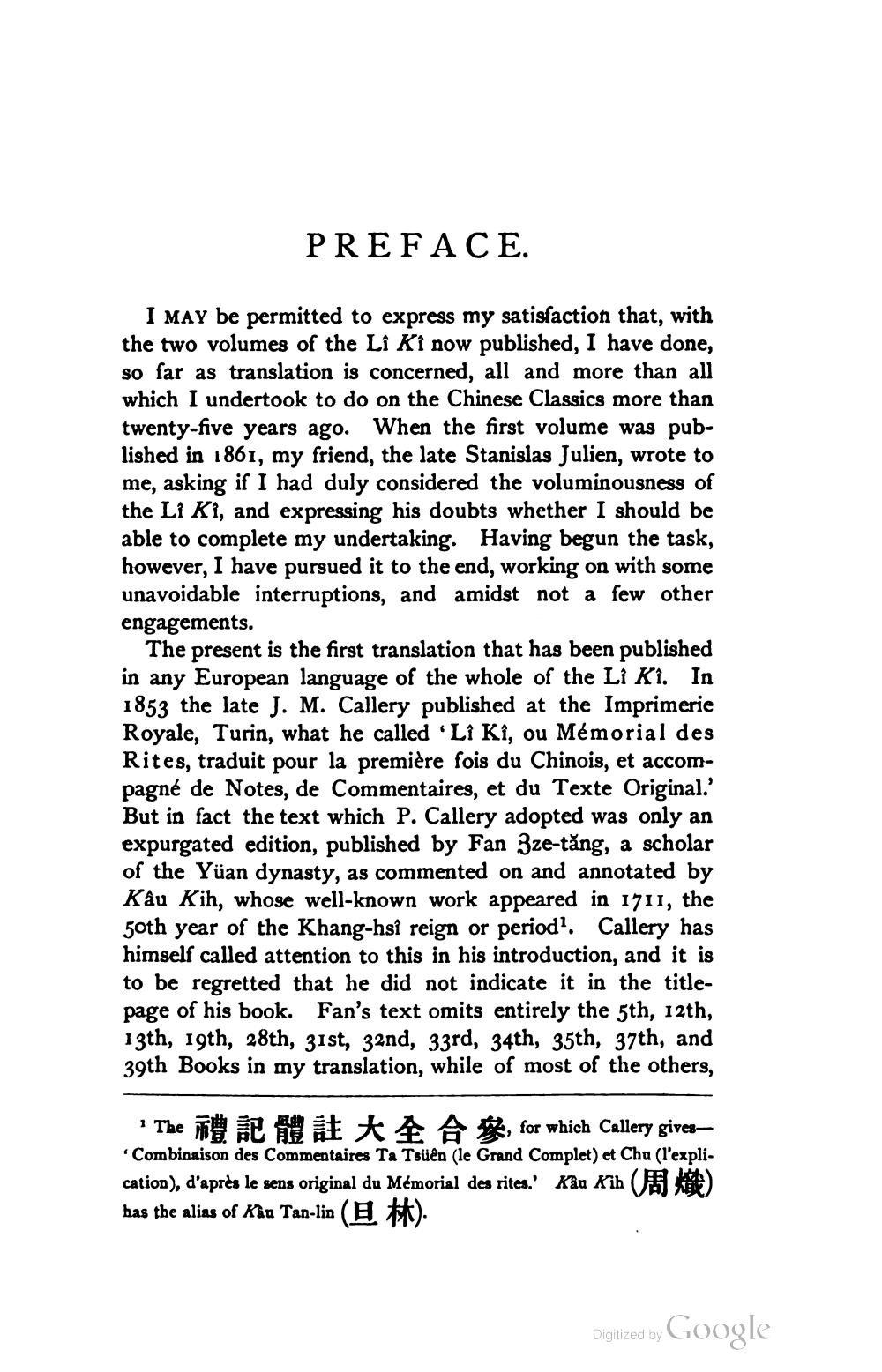________________
PREFACE.
I MAY be permitted to express my satisfaction that, with the two volumes of the Li Ki now published, I have done, so far as translation is concerned, all and more than all which I undertook to do on the Chinese Classics more than twenty-five years ago. When the first volume was published in 1861, my friend, the late Stanislas Julien, wrote to me, asking if I had duly considered the voluminousness of the Lî Ki, and expressing his doubts whether I should be able to complete my undertaking. Having begun the task, however, I have pursued it to the end, working on with some unavoidable interruptions, and amidst not a few other engagements.
The present is the first translation that has been published in any European language of the whole of the Li Ki. In 1853 the late J. M. Callery published at the Imprimerie Royale, Turin, what he called 'Li Kí, ou Mémorial des Rites, traduit pour la première fois du Chinois, et accompagné de Notes, de Commentaires, et du Texte Original.' But in fact the text which P. Callery adopted was only an expurgated edition, published by Fan 3ze-tăng, a scholar of the Yuan dynasty, as commented on and annotated by Kâu Kih, whose well-known work appeared in 1711, the 50th year of the Khang-hsî reign or period'. Callery has himself called attention to this in his introduction, and it is to be regretted that he did not indicate it in the titlepage of his book. Fan's text omits entirely the 5th, 12th, 13th, 19th, 28th, 31st, 32nd, 33rd, 34th, 35th, 37th, and 39th Books in my translation, while of most of the others,
* The m e t tAA , for which Callery givesCombinaison des Commentaires Ta Tsüên (le Grand Complet) et Chu (l'explication), d'après le sens original du Mémorial des rites.' Kâu Kih ( K) has the alias of Kau Tan-lis
Digitized by Google




